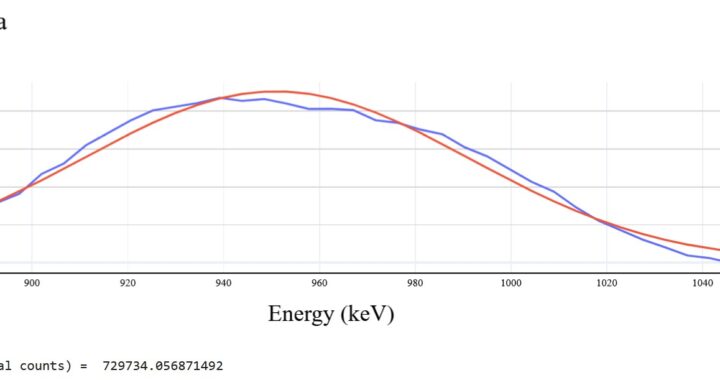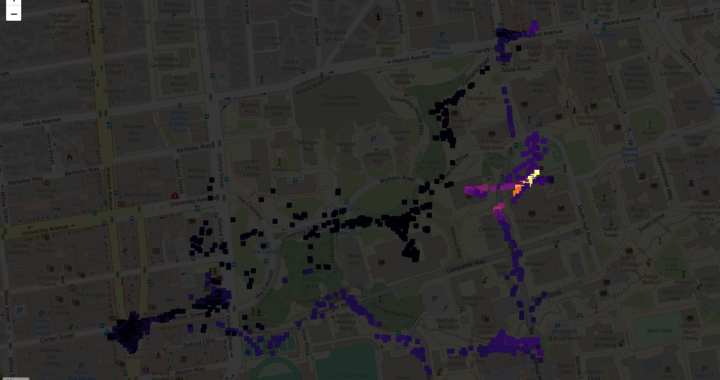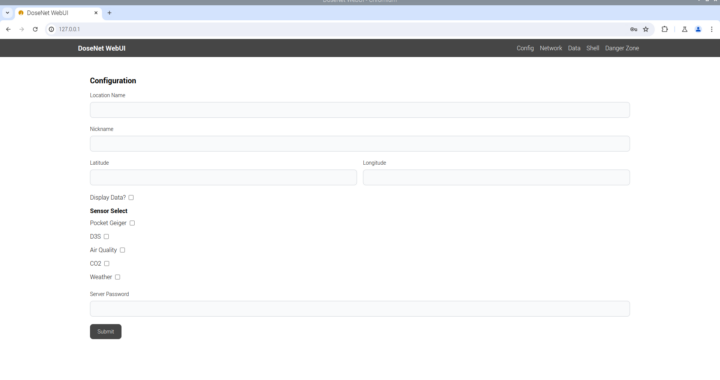The Alpha Radiation Detector
Aiden Wu
Background
Ionizing radiation is a type of electromagnetic energy that, with enough exposure, can be harmful to organic life because it can damage DNA. We can detect and measure radiation using devices like the SmartCam radiation detector that is on the UC Berkeley Etcheverry Hall roof. Of note, one of the things we can also detect with the detector is the presence of polonium, a radioactive metal.
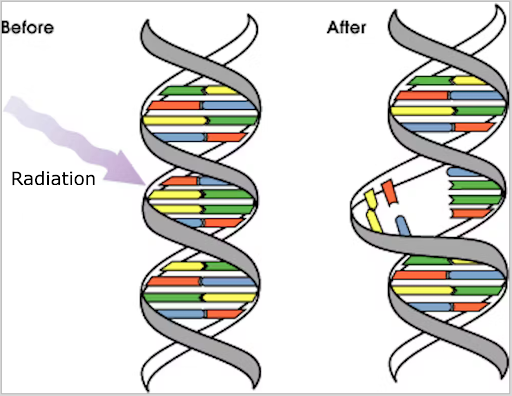
Basic Radiation Interaction with DNA
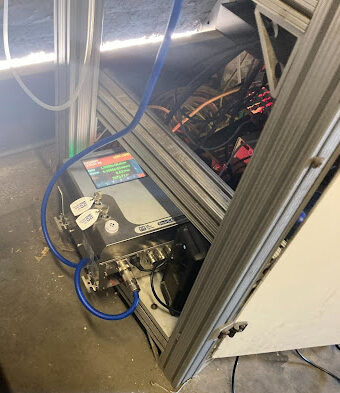
The SmartCAM alpha detector on the roof of Etcheverry Hall
Introduction
For the 2024 summer UCB RadWatch internship, I created a graphing interface that plots the data obtained from the SmartCam radiation detector on the roof of Etcheverry Hall. The code takes the measured radiation data, such as high roi and low roi radiation, and puts it on one graph. It uses Plotly, a python library, to create an interactive graph where you can zoom in and see exact data points.
Method
The radiation detector stores its raw data in a computer that is attached to it. Files are currently transferred manually with a USB drive. The code I worked on enables pd.read_csv to read the .csv files given by the radiation detector and then uses the to list function to create a list of the data so it can be graphed. The code then uses the go.Scatter and fig_add trace to create a graph of the data.
Results
We found a huge increase in Polonium 214 compared to other readings starting on July 19 2024 at ~22:35 time. On July 23, 2024, pol 214 reached a peak of 140 pCi. Also on July 23, 2024 at 16:30, the detector’s filter was changed. A new, clean filter was replaced. Despite filter replacement, the radiation level reached a peak of 140 pCi at 21:00 that day. Currently pol 214 still hovers around 50 pCi to 70pCi.
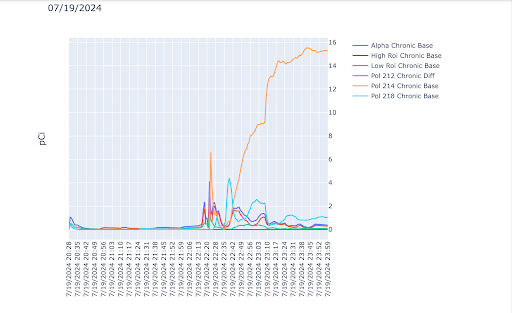
Chronic Alpha readings from the SmartCAM. These include the activity of proprietary energy discriminated values.
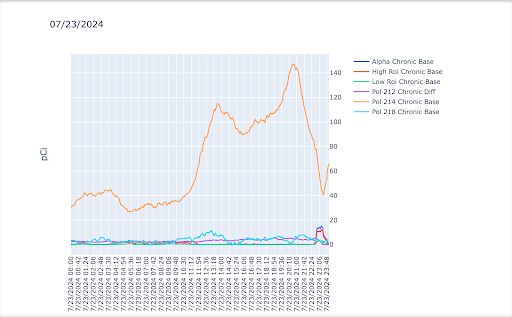
Continuation of SmartCAM visualization of chronic values, some days later
The other radiation levels , such as High ROI and low roi, are very low, currently ranging below 2 Pci with occasional spikes below 10 pCi since the beginning of July 2024, the start of internship.
Discussion
What is causing the spike in Pol 214? It is unclear why this increase has happened. Dani Solakian, my mentor, theorizes that some other radioactive material is getting stuck in the filter and it is emitting the same radiation. However, even after we changed the filter on July 23 at 4:30 pm, Pol 214 still ranges from 50 to 70 Pci. Another theory, that I have, could be that there is something leaking from this building that we are picking up by the detector. After all, Etcheverry Hall is a place where radiation experiments are taking place. The detector could be picking up experimental radiation leakage. However, the detector is high up on the roof of Etcheverry Hall so it is unlikely the detector is detecting a significant amount of the radiation emitted from the ground. In addition, the detector is not high enough into earth’s atmosphere to absorb large amounts of radiation coming from space. Therefore the radiation is most likely coming from nearby structures of similar elevation. It would be interesting to test whether the radiation level would be affected by moving the detector to another location, another building of similar height. Another possibility is software or hardware issues with the machine, downstream from the detector itself. Could the file be corrupted? Could the wiring be loose? We could recheck the wiring of the detector and check the software. If we have a control sample with known radioactive counts, we can check the fidelity of the data from the detector all the way to the encoding by the computer into csv files.
Acknowledgements
Finally I want to thank Dr. Ali Hanks for the invaluable, awesome, learning opportunity. I also want to thank Dani Solakian for being a great mentor who is available to teach me about nuclear physics and python. This internship is such an eye opener for me, and I have enjoyed every moment of it. I learned about nuclear decay and radiation detection. On top of that, I also learned Python programming using Pandas, Matplotlib and Plotly.
The author would additionally like to acknowledge that Aiden completed this report over a summer between 7th and 8th grade, great work Aiden!

